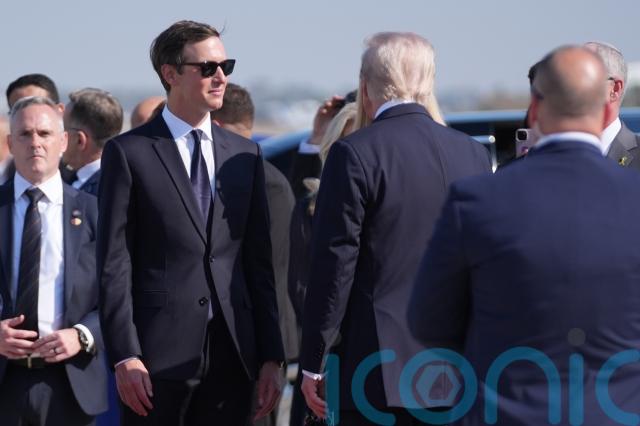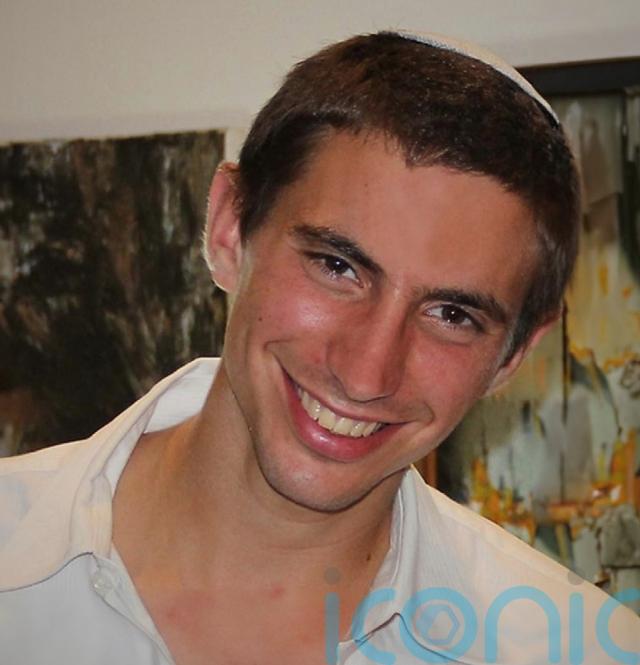
Israel on Monday returned the remains of 15 Palestinians to Gaza in the latest step forward for a US-brokered ceasefire, as a top White House envoy met Israeli leaders to discuss the next stages of the fragile agreement.
Israel returned the bodies after Palestinian militants released the remains of a hostage on Sunday. With the latest exchange, only four bodies of hostages remained in Gaza.
As the first stage of the agreement reached its waning days, US President Donald Trump’s son-in-law, Jared Kushner, met on Monday with Israeli Prime Minister Benjamin Netanyahu in Jerusalem, according to a photo released by the premier’s office.

The last ceasefire agreement in January 2025 fizzled after the exchange of hostages for Palestinian prisoners, with Israel launching a wave of airstrikes over Gaza.
At the time, mediators were unable to bring Hamas and Israel to the table to negotiate troop withdrawal and future governance of the strip.
They face a similar challenge now, as the next stage of the agreement calls for the implementation of a governing body for Gaza and the deployment of an international stabilisation force. It is not clear where either stands.
The Gaza Health Ministry said the Red Cross handed over the Palestinian bodies on Monday, raising the total number received to 315. For each Israeli hostage returned, Israel has been releasing the remains of 15 Palestinians.
The ministry, part of the Hamas-run government and staffed by medical professionals, maintains detailed records viewed as generally reliable by independent experts.
Only 91 of the bodies returned so far have been identified, the ministry said. Forensic work is complicated by a lack of DNA testing kits in Gaza. The ministry posts photos of the remains online, in the hope that families will recognise them.
The handover came after Israel on Sunday confirmed it had received the remains of Hadar Goldin, a soldier killed in the Gaza Strip in 2014, closing a painful chapter for the country.
The 23-year-old was killed two hours after a ceasefire took effect in that year’s war between Israel and Hamas. Mr Goldin’s family waged a public campaign for 11 years to bring home his remains. Earlier this year, they marked 4,000 days since his body was taken.

Israel’s military had long determined that he had been killed, based on evidence found in the tunnel where his body was taken, including a blood-soaked shirt and prayer fringes. His remains had been the only ones left in Gaza predating the current war between Israel and Hamas.
Around 1,200 people, mostly civilians, were killed in the Hamas-led attack on October 7 2023 on southern Israel, which sparked the war, and 251 people were kidnapped. On Saturday, Gaza’s Health Ministry said the number of Palestinians killed in Gaza has risen to 69,176.
Mr Netanyahu’s office did not immediately say what he and officials had discussed in his Monday meeting with Mr Kushner. Mr Kushner, a top adviser to Mr Trump, was a key architect of Washington’s 20-point ceasefire plan.
The deal that took effect October 10 has focused on the first phase of halting the fighting, releasing all hostages and boosting humanitarian aid to Gaza.
Details of the second phase, including deploying an international security force, disarming Hamas and governing post-war Gaza, have not yet been worked out.
Mr Kushner was helping to lead negotiations to secure safe passage for 150-200 trapped Hamas militants in exchange for surrendering their weapons after the release of Mr Goldin’s remains, according to someone close to the negotiations, who spoke on condition of anonymity to describe the talks.
Hamas has made no comment on a possible exchange for its fighters stuck in the so-called yellow zone, which is controlled by Israeli forces, though they acknowledged that clashes were taking place there.
In the West Bank, the village of Umm Al-Khair that was featured in the Oscar-winning documentary No Other Land, was bracing on Monday for the arrival of Israeli military bulldozers.
The documentary chronicles villagers’ attempts to survive rounds of state-backed demolitions and violence from Israeli settlers.
Residents now say that Israel has ordered the demolition of 14 structures in the village, including the community centre, greenhouse and family homes. It is unknown when the demolitions will occur, but a press release from the community says they could begin on Tuesday.
Israel says the structures were built illegally. Residents say it is impossible to secure permits to build in the West Bank, leaving them little choice but to rebuild their homes following demolitions.
Bimkom, an Israeli rights group that focuses on urban planning, says that between 2016 and 2021 Israel rejected 99% of Palestinian requests for building permits in Area C of the West Bank, where Umm al-Khair is located.
The village was founded in the 1950s by traditionally nomadic people, known as Bedouin, who settled there just after being uprooted from the Negev desert during the 1948 war surrounding Israel’s creation. Two decades later, Umm Al-Khair fell under Israeli security control when Israel captured the West Bank.
Settler attacks, residents say, began in the 1980s, after Israel built the settlement of Carmel close to Umm Al-Khair.
Earlier this year, an internationally sanctioned Israeli settler shot and killed a community leader, Awdah Hathaleen, as he was standing inside the community centre.
Subscribe or register today to discover more from DonegalLive.ie
Buy the e-paper of the Donegal Democrat, Donegal People's Press, Donegal Post and Inish Times here for instant access to Donegal's premier news titles.
Keep up with the latest news from Donegal with our daily newsletter featuring the most important stories of the day delivered to your inbox every evening at 5pm.